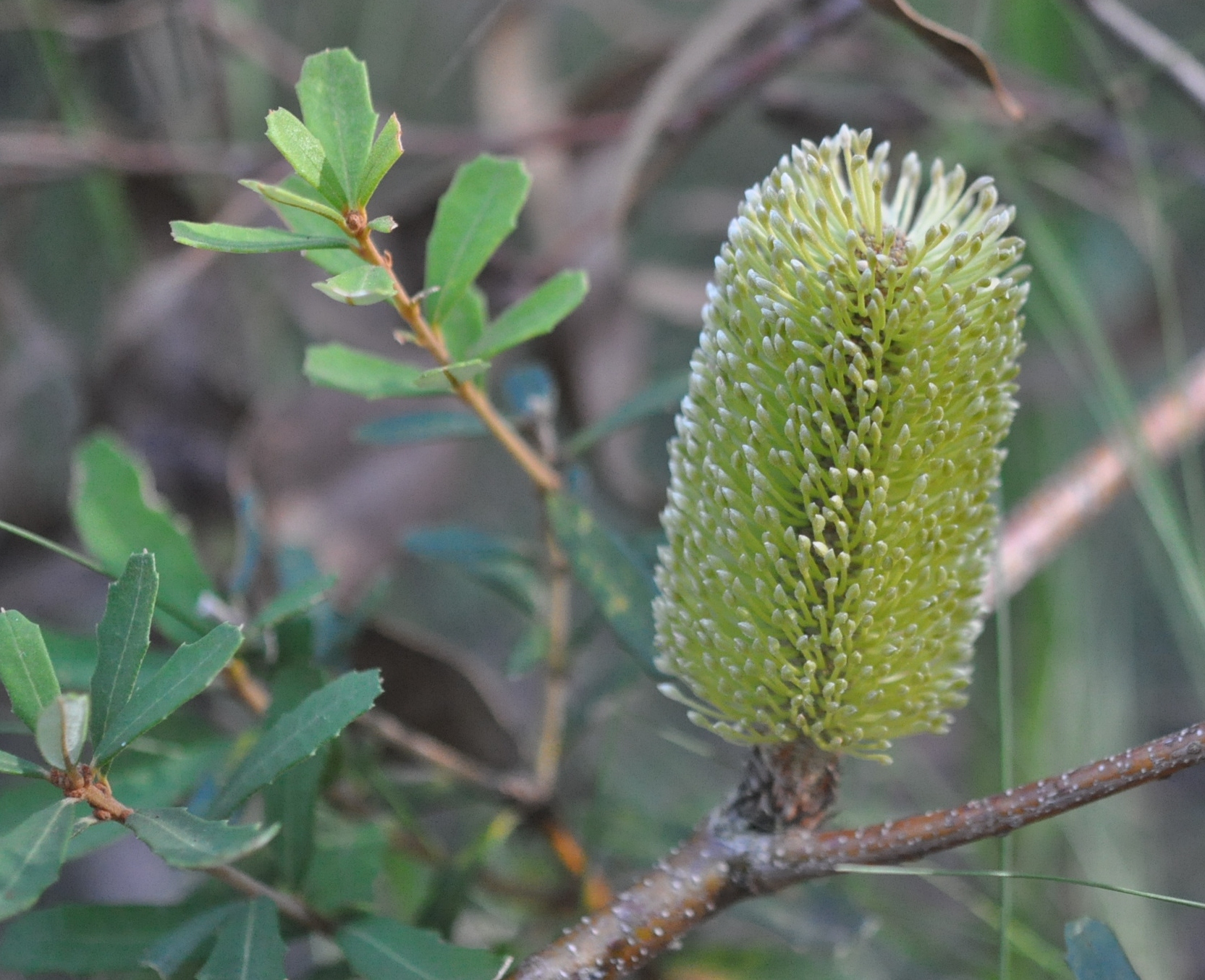Description
Common names
Silver Banksia, Honeysuckle, Woorike, Banksia, Dwarf Honeysuckle, Margined Banksia, Warrock.
Scientific names
Banksia marginata.
Family
Proteaceae.
Genus
Banksia.
Name origin
Banksia, named after wife of naturalist Sir Joseph Banks, who collected first Banksia specimens for classification in 1770. Marginata, from Latin marginatus, bordered, referring to leaf margins.
Rainfall
500mm.
Growth rate
Moderate, fast.
Growth height
Up to 12m.
Presence in Australia
Not widespread. Noted in Munderoo district and Bringenbrong-Khancoban district. Historical records indicate it once existed around Narrandera.
This specie has been identified in the following Australian states: NSW, ACT, Vic, Tas, SA, WA.
Habitat
Dry sclerophyll forest.
Habit
Compact shrub or small tree to 12m high.
Site preference
Most soils in cultivation, tolerating some waterlogging, frost and wind. Full sun or partial shade. Grows more spindly in shady sites.
Characteristics
Fast-growing compared to other banksias, and long-lived. Fire retarder. Attributes strongly influenced by provenance (locality), including presence or absence of lignotuber. Tolerates frost, and short periods of waterlogging.
Flowering
Pale yellow, Feb-Jul. Profuse and honey-scented.
Seed collection
Early Feb to late Apr. Seed released 3-8 weeks after maturity.
Propagation
From fresh seed (±125 viable seeds per gram) or cuttings of firm young growth. Fresh seeds firm and white when cut in two. Old seeds pliable or brittle and cream-coloured. Enhance germination by stratifying seeds in moist paper or sand in refrigerator for 6-10 weeks. Sow Oct to Feb. Seedlings susceptible to fungal damage. Prick out as soon as first true leaves appear.
Regeneration
After fire, from seed or re-shooting from lignotuber, if present. Can be direct-sown, but establishes better from tubestock.
Shade and shelter
Useful medium-level cover in windbreaks.
Fuel
Not generally used. Records from mid-nineteenth century note its "uselessness" as a fuel.
Timber
Soft, spongy and red. Weighs little when dry. Generally unsuitable for commercial timber production due to inadequate size and spongy wood. Tends to warp severely upon drying, but can be turned if seasoned carefully.
Wildlife
Seeds eaten by cockatoos (particularly Yellow-tailed Black-cockatoo). All banksias produce copious nectar, favoured by honeyeaters and lorikeets. Birds are main pollinators, and banksias provide excellent means of maintaining bird populations during flowering. Native moths, butterflies and pygmy possums are attracted to flowers as a food source.
Koori
Flower cones soaked in water in wooden vessels to extract sweet nectar for a drink, or sucked directly. Dry cones used as strainers.
Ornamental
Attractive specimen for parks and gardens. Decorative seed cones used in floral arrangements. Used in bonsai. Excess phosphorous damages or kills plants. Iron deficiency is common and shows as yellow leaves with green veins. Feed with iron chelate to rectify. Resents pruning.
Other
Leaves produce yellow dye, with alum as a mordant. Cut flowers or foliage.



